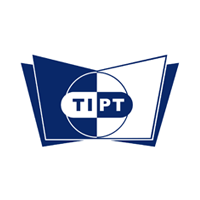 Pharmaceutical products come in many different shapes and sizes. Depending on the specific ailment they are dealing with, a patient may find themselves needing to take pills, bottled medicine, or even use ointments and creams.
Pharmaceutical products come in many different shapes and sizes. Depending on the specific ailment they are dealing with, a patient may find themselves needing to take pills, bottled medicine, or even use ointments and creams.
So how do pharmaceutical companies determine which dosage form is the best vehicle for their medications, and what makes certain forms more suitable than others for specific purposes? If you are considering pursuing pharmaceutical manufacturing training, keep reading for a brief overview of some of the different types of drug dosage forms you can expect to encounter during your career.
What Students in Pharmaceutical Manufacturing Training Should Know About Solid Dosage Forms
Powder is the most common solid dosage form. In this instance, drugs are dried and divided into quantities that can be used internally and externally. Often, the powder is placed inside a hard-shelled pill capsule in order to more easily transfer the medication through the system.
Tablets are another popular drug delivery method. They come in many different shapes and colours, and can also be sweetened and coated to make them easier to swallow and to allow for easier movement in the body. Effervescent tablets are uncoated but must be dissolved in water before ingestion. Professionals with pharmaceutical manufacturing training use binding agents, diluents, and lubricants in order to mould tablets into the correct shape and size.
The advantages of using solid pharmaceutical dosage forms are that they are easy to administer, easy to identify and can have a more palatable taste. However, solids usually take longer to absorb into the bloodstream than liquids, making them a less suitable choice for medications that need to work quickly.
Liquid Medication Can Come in a Variety of Forms
Forms of liquid dosage can be broadly divided into two categories – aqueous (water-based) and non-aqueous (any non-water liquid). Nevertheless, liquid dosage forms are many and varied and can include solutions (ingredients dissolved in clear liquid), emulsions (oil-in-water dispersions), and syrups (a sugar-infused solution) to name just a few.

Most liquid medications are intended for oral use, but some can also be injected into the bloodstream using needles. Drugs in liquid form can also be developed as sprays that can be administered orally or onto the skin. Inhalants are another variant of the liquid group, which allows medication to be administered into the nasal passage.
Students in pharmaceutical manufacturing courses will learn that liquids are easier to swallow than solids and can be absorbed by the body faster. However, they can have a shorter life span, may need special storage conditions, and can be more difficult to measure, making them somewhat more problematic for manufacturers to produce.
Topical Treatments Are a Good Option For The Skin
Placing medication directly onto the skin is another effective way of treating an ailment. Such substances could be said to fall between the liquid and solid categories, and can otherwise be termed as topical dosage forms.

Ointments are a common topical dosage form and are semi-solid, greasy substances which can be used on the outer body to apply suspended or dissolved medication. Creams and lotions are also used to protect and cleanse the skin due to their oil content, while eye and ear drops are also termed as topical treatments. Topical dosages can allow people to treat pain directly where it hurts, are easy to apply, and non-invasive. However, absorption through the skin can be quite slow, meaning they are not ideal for many types of ailment.
Are you excited by the prospect of getting started in a pharmaceutical manufacturing program?
Find out what the Toronto Institute of Pharmaceutical Technology can offer you.
